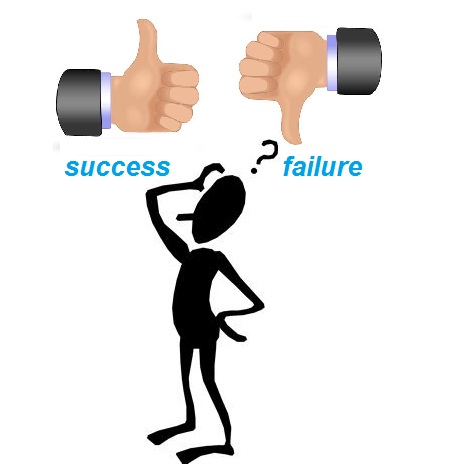How to Maximize Return on Software Investment Project
 Because of increasing competition and growing business demands, today’s organizations are looking at increasing their investments in software and IT sector. IT and software investment projects are regarded as a way to grow business, improve competitiveness, and strengthen leading positions. However, the economic recovery remains uncertain, and most companies are concerned with gaining the most from their software investment dollars.
Because of increasing competition and growing business demands, today’s organizations are looking at increasing their investments in software and IT sector. IT and software investment projects are regarded as a way to grow business, improve competitiveness, and strengthen leading positions. However, the economic recovery remains uncertain, and most companies are concerned with gaining the most from their software investment dollars.
This article describes a methodology organizations can employ to maximize the return on software investment projects. The methodology allows speeding project implementation and achieving ROI faster. It will show you how to define and track performance metrics to maximize the return on your software investment project.
Two Issues
It is obvious that the best way to maximize the return on software investment project is to align technology with business objectives. In one of our previous articles we described a 7-step approach to developing IT investment business case that supports this idea.
But even after organizations have selected and bought the right system for their environments, they must have a proven methodology that ensures the implementation maximizes the return from their software solution.
There are two issues your company needs to consider when trying to maximize ROI:
- Implementation. A software system generates no ROI until it is successfully implemented and in used. Therefore, the company needs to minimize implementation risks and put the solution into operation as soon as possible. The right implementation approach will ensure that the software addresses the right business goals and objectives.
- Performance. There should be some indicators that could allow measuring software performance and determining how well the technology delivers the business objectives. Performance metrics will also help figure out whether or not your software investment project provides opportunities for company performance improvements.
So, there are Implementation and Performance that determine the success of technology implementation and that impact the return of investment. Following this idea, let’s specify the steps that ensure a software solution is aligned with business objectives and implemented on time and within budget. The described below steps will help you maximize return on software investment project.
Steps to Maximizing ROI
We describe the following steps you can employ to maximize ROI:
- Review the Business Case
- Build the Implementation Teams
- Understand the Functionality
- Define the Processes to Improve
- Review the Preferred Solution
- Develop KPIs
- Measure ROI During/After Implementation
Step #1. Review the Business Case
Before starting implementing a software investment project, there should be a documented business case that determines the need for the software solution and the impact it will have on a company’s performance and profitability. Therefore, you must review your business case to make sure your project is feasible and economically reasonable.
The business case will help you understand the goals of your IT investment project. For example, the project may have these goals:
- Improved Operational Efficiency. End users must be able to carry out tasks and operations with greater efficiency. The system should allow for process automation, quick access to information, better communication, others.
- Improved Decision Making. As your software solution improves communication and data management, the managers are able to view summarized information needed for effective decision making.
- Greater Employee Engagement. Your employees become more productive due to increased operational efficiency and thus they are able to avoid time wasting and focus on performing more strategic and meaningful activities.
Step #2. Build the Implementation Teams
Now, you must involve the right people with the right knowledge and enough authority to keep your IT investment project healthy (with no critical risks) and moving forward.
We suggest you build two teams which will manage and implement the project. These teams are:
- Executive Committee. This team oversees and governs the software implementation process. The members are Sponsor (an organization or individual that provided the funds for your investment project), Executive Managers (the top management of your company), and Consultants (internal/external experts providing strategic advice and guidance).
- Project Team. This team will take ownership of the implementation, do the project, and communicate with end users. It should consist of line managers, supervisors and heads of all business units that will be affected by the software, such as Manufacturing, Sales, Marketing, Logistics, Support, Finance, etc.
Step #3. Understand the Functionality
Your company needs to examine and accept the features and functions of the software. The project team must gain insight into the functionality to make sure the software really delivers the solution need by your company. This will help you understand what is possible to achieve using the software and what problems and risks surround the project. Read these optimization best practices to find out more about how to succeed in ERP implementation.
Step $4. Define the Processes to Improve
Along with the business case that tells you what goals to achieve by the IT implementation, you must have a description of the business processes to be improved through using the software solution.
In order to define which processes to improve, follow these steps:
- Carefully review how your organization currently performs all existing business processes
- Have a set of efficiency metrics to understand whether each business process produces desired results
- Define business processes that have performance gaps and bottlenecks to be removed using your software solution
- Identify possible ways to employ the functionality of the software to streamline and improve these processes
Step #5. Review the Preferred Solution
Your business case analyzes and determines the most suitable solution which is selected against these parameters:
- The potential benefits to be delivered
- The potential costs to be incurred
- The risks associated with the implementation
Your preferred software solution should be cost-effective and involve the lowest portion of risk, as compared to the alternatives defined and explored in your business case. You must recommend the solution to the upper management for review and approval. When all this is done, you can proceed with developing key performance indicators (KPIs).
Step #6. Develop KPIs
Key performance indicators and quantifiable metrics help you measure and improve the performance of your implementation project. KPIs reflect the progress of the organization towards achieving its business goals and objectives using the software solution.
You must develop KPIs that cover all business units, departments and individuals and that measure the implementation process against clearly defined targets and benchmarks.
For example, to the Sales department you can apply such KPIs as Average sale, Average margin per sale, Number of leads generated, others. The Accounting dept. may use such measures as Total receivables, Average account aging, Payables over a 30-day period, etc.
Step #7. Measure ROI During/After Implementation
The final step in maximizing return on software investment project is to determine ROI during and after the implementation process. Your KPIs will help the implementation teams gain insight into the company’s performance and determine whether or not the software solution has a positive effect on it.
Remember you shouldn’t expect to gain all the benefits defined by your business case right away after your project is over. Give your users time to test the new system and understand how it best operates. In the first month of using the software solution the users are still learning and making mistakes. Only after several months you can expect acceptable ROI and start measuring the company’s performance.
Also remember to constantly review the performance, uncover gaps, and innovate your company’s operating environment. Through implementing needed improvements and upgrades to your system you can maximize the return on software investment project.














